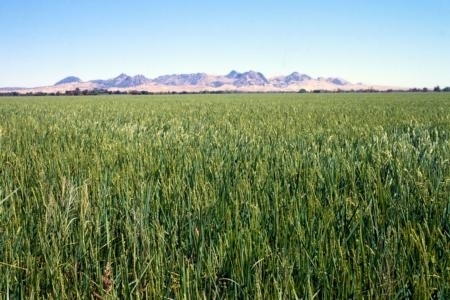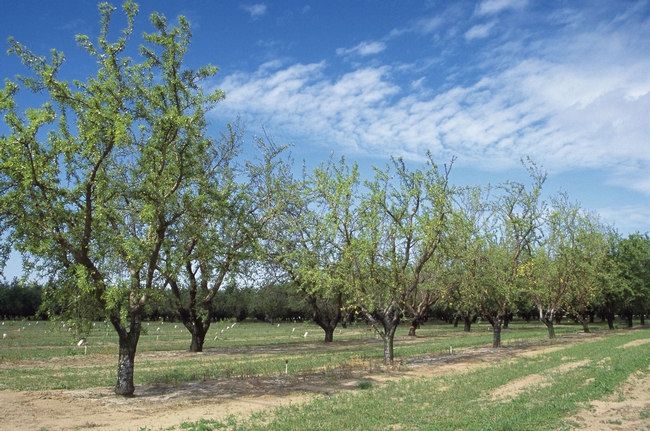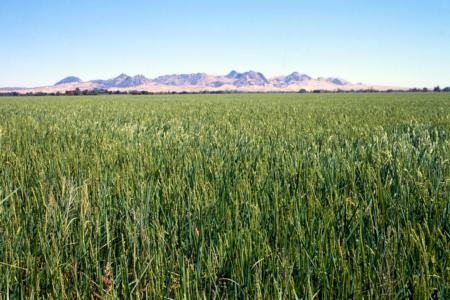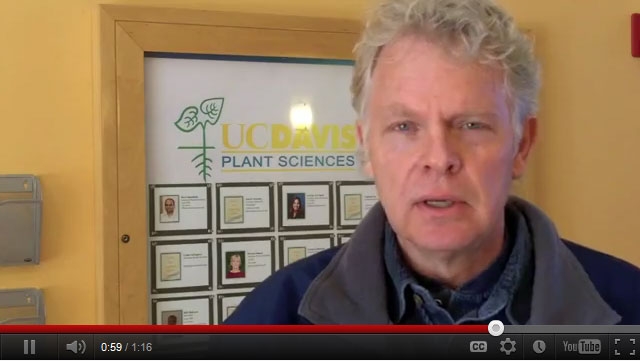Posts Tagged: Cass Mutters
Rice planting moving along despite tight water supplies
Rice planting in California is well underway and taking place more quickly than expected, reported Heather Hacking in the Oroville Mercury Register.
Despite early worries about water supplies, Cass Mutters, UC Cooperative Extension advisor in Butte County, said 25 to 30 percent of rice acreage is planted; statewide about 10 to 15 percent of acreage has been planted. According to the article, rain in March delivered enough water to Lake Oroville for full water contracts to be honored.
Things could have turned out a lot worse, said Chris Greer, UCCE adviser in Sutter, Yuba, Sacramento and Placer counties.
A month ago it looked like 200,000 acres statewide would go without being planted, of a total of about 550,000 acres of rice land.
Greer told the reporter that farmers are still deeply concerned about the California water situation.
"It still worries you thinking about this winter," Greer said. "We're eking by as we can this year, but if we have another dry winter, I'm not sure we're going to be able to meet what we are delivering this year. That would be difficult."
Most rice is planted by airplane, but some farmers are experimenting with drill seeding. Drill seeding requires more labor, but results in more precise placement of seed and fertilizer in the fields.
Northern California nut farmers' drought outlook not too shabby
If anyone can be lucky during a drought, that would be Butte County nut growers, reported Heather Hacking in the Chico Enterprise Record.
Many of these farmers use groundwater to irrigate their orchards, and groundwater in the Sacramento Valley is in pretty good shape, said Joe Connell, UC Cooperative Extension advisor and county director in Butte County.
If groundwater levels drop, growers will be pumping from farther down. So far, things look like they will be OK for orchard crops, Connell said. The supply of bees was adequate and before the rains, there was time for bees to pollinate.
The outlook isn't quite as rosy for rice farmers in the area, Randall "Cass" Mutters, UCCE advisor in Butte County, told the reporter.
"The buzz is that everyone is waiting on what the allotment will be," Mutters said. "No one will know until April 1."
However, recent rains were just a dribble compared to normal for this time of year. The Department of Water Resources and the Bureau of Reclamation have said surface water deliveries will be very low or nonexistent for growers.
The article concluded with a link to the UC California Institute for Water Resources drought page and a list of the resources available there to farmers, homeowners and the media.
Rice planting on schedule in Butte and Glenn counties
Despite light rain earlier this week, it appears the Butte and Glenn county rice industry is getting seeds in the ground during the ideal planting window, reported the Chico Enterprise Record.
The ideal time for planting rice is May 1-15, said Randall "Cass" Mutters, UC Cooperative Extension advisor in Butte County. As the date gets later, farmers will end up with a later harvest. Fall weather is more unpredictable and farmers could end up harvesting in the mud. Last year, farmers were still planting rice at the end of May.
"I would say overall (this year) we're between a week or two weeks ahead of schedule," Mutters said.
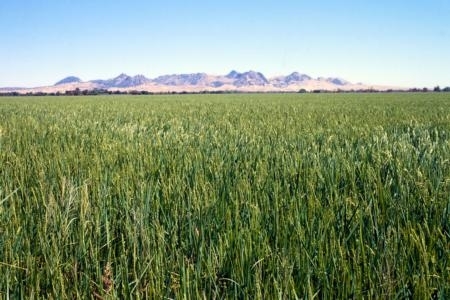
Rice planting is on track in 2013.
California rice growers reduce greenhouse gas emissions
Butler is participating in a pilot program funded by the Environmental Defense Fund. Though it’s too early to measure, he has seen promising signs from the project.
“We’ve had good results with yield and water conservation, which really was our goal,” says Butler. “We’re happy that greenhouse gases go down as a result of that, but they weren’t the initial reason why we do that.”
Of the global GHG accumulation for all sectors, 0.001 percent comes from California rice fields, according to data compiled by Luis Espino, UC Cooperative Extension rice farm advisor for Colusa County.
“It’s such a new issue I don’t think much has been done in that area,” says Espino. “Right now UC Davis is doing the research, doing the modeling, trying to understand what goes on in the soil.”
Cass Mutters, UC Cooperative Extension advisor for Butte County, noted that California rice growers realize that being environmentally sensitive is part of their responsibility. Since the 1980s, changes in irrigation management and other practices have led to a 98 percent reduction in pesticide residues entering public waterways from rice fields. Along with water quality, the rice industry supports an air quality monitoring network that enables the Air Resources Board to model how many acres can be burned without exceeding federal air quality standards.
UCCE advisor addresses water use efficiency on YouTube
The California water news blog Aquafornia posted a video on YouTube today featuring Cass Mutters, the UC Cooperative Extension advisor in Butte County who specializes in rice, winter cereals and turf.
In the video, Mutters explains that UCCE has for years been engaged in reducing the amount of water needed to grow rice in the Central Valley. He gave two examples:
Variety development. A generation ago, it required 160 days to grow a variety from seed to maturity. New varieties require 140 days. This has resulted in a 15 percent reduction in water use.
Precision leveling of land. Laser leveling of land allows farmers to apply water very precisely and maintain a uniform depth of water in the field of about 4 to 5 inches. This technology has reduced water use by an additional 15 percent.


